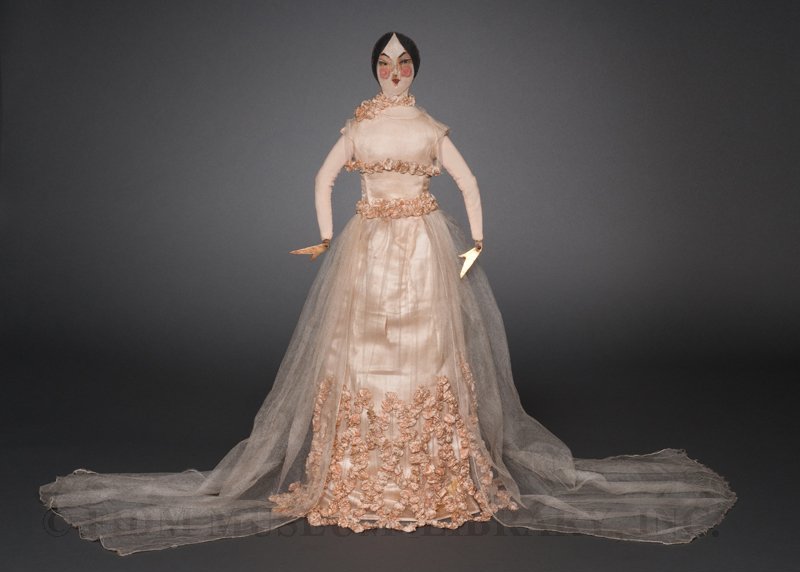Jeanne Lanvin fashion figure
 Fashion Figure
Fashion Figure
Winter 1921
Jeanne Lanvin
Museum Purchase
2008.25.1
The original purpose of this extremely rare Jeanne Lanvin (1867-1946) fashion figure is a mystery. It may have been associated with an extensive display of figures at the International Silk Exhibition held in New York City's Grand Central Palace in 1921.1 Its construction is unusual: a flat, wooden body with lightly padded contours covered with flesh-colored silk crêpe and articulated copper arms with flipper-like hands in the angular Art Deco style. The haughty, painted face with its target-like rouge mimics the highly stylized makeup of the maison's super-attenuated fashion plate figures.
A corresponding croquis from the Lanvin Archive reveals this modѐle's title: "Rose Poupon," which translates to "Plump Rose." It is also a play on words referencing the fashion figures of the eighteenth-century called "poupées," or "dolls," that were sent worldwide to showcase the latest Paris fashions. Lanvin's romantic robe de style—a full-skirted dress with concentrations of gathers at the hips—was the antithesis of the sleek, tubular silhouette that dominated the 1920s. Gathered ribbon roses with hand-tinted pink centers trim the neckline and form a trellis on the skirt. They were called "roses de Polignac," after Gabrielle, comtesse de Polignac (1749-1793), confidant of Queen Marie Antoinette (1755-1793). Lanvin's daughter and muse, Marie-Blanche (1897-1958), was a twentieth-century comtesse de Polignac.
1 Vogue (April 1, 1921), 42-43.